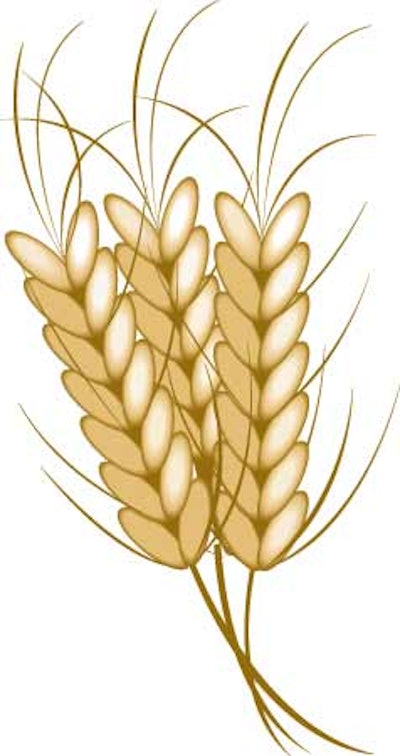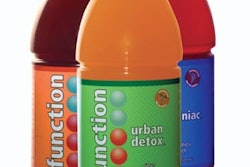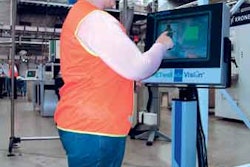
The Food and Drug Administration’s attempt to referee the whole-grain foods labeling debate has various food companies crying foul.
General Mills, Inc., and a number of allies are using the draft guidance the FDA issued last February as the latest basis for criticizing the agency for refusing to establish a safe harbor for the use of terms like “good” and “excellent” source of whole grains.
General Mills submitted a petition to the agency in 2004 asking to be able to label its cereals and other products as good and excellent sources of whole grains if they met a certain content standard. The FDA never acted on that petition, which didn’t bother the company. In late 2004, GM went ahead anyway and reformulated its breakfast cereals in order to be able to label them as “good” and “excellent” sources of whole grains based on the criterion used by the Whole Grains Council (WGC), a private group made up of various industry associations.
“Cereal companies and baked goods companies are arguing over when a company can use the term ‘whole grain’ on its label.”
To date, the FDA has not defined, in either a guidance document or law, how much whole grain has to be in a serving of a product for the company to be able to use the description “good” or “excellent” source of whole grain on the package. In the draft guidance it issued in February, the agency signaled it intended to stick to that position.
Nonetheless, it isn’t technically illegal to use those terms. The FDA has no law against such descriptive terms on food labels. But neither is use of the label claim exactly kosher, as it would be if the FDA approved guidance on that subject. Doing so would create a “safe harbor” for companies, meaning there would be no chance of FDA enforcement action against them as long as they heeded the terms of the guidance.
In this current grey area environment, companies like General Mills who use those terms run the risk, however slight, of the FDA taking enforcement action against them.
Push for protection
That explains the push by General Mills, the Whole Grains Council and their allies to convince the FDA to change its mind. The WGC has offered members, including GM, use of a stamp design proclaiming a product a “good,” “excellent,” or “100% excellent” source of whole grains.
The stamp was made available in January 2005, just after the U.S. Department of Agriculture published its Dietary Guidelines for Americans, 2005 that recommended that individuals “consume 3 or more ounce-equivalents (48 grams) of whole-grain products per day, with the rest of the recommended grains coming from enriched or whole-grain products.”
“To date, the FDA has not defined, in either a guidance document or law, how much whole grain has to be in a serving of a product for the company to be able to use the description ‘good’ or ‘excellent’ source of whole grain on the package.”
The WGC established 8 grams of whole grains as the amount a product must contain to use a “good” label, 16 grams for “excellent,” and the product must be 100% whole grain to use the “100% excellent” label.
That stamp has proven very popular, providing some evidence that whole-grain labeling of food is becoming the phenomenon that perhaps “low-carb” once was. There were 27 members in the WGC back in January 2005. Today, there are 116, according to Cynthia Harriman, director of food and nutrition strategies.
General Mills uses the stamp on its Cascadian Farm granola bars, although not on its breakfast cereals, many of which do have “good” or “excellent source” label copy on their packages. A few of the other major companies using the whole grain stamp are Kashi (Kelloggs) and American Italian Pasta Co (pasta—Muellers noodles).
Guidance worries
The FDA’s announcement in the draft guidance that it continues to oppose use of “good” and “excellent” source of ingredient claims for whole grains applied new pressure to food manufacturers. It led to a meeting between WGC and FDA officials on March 30.
Subsequently, in June, the WGC announced that it was changing its stamp by requiring users to include language stating either the actual number of whole grain grams in a serving, or the fact that a product has “more than” eight or 16 grams of whole grain. Each of the stamps will also say, “Eat 48g or More of Whole Grains Daily.” General Mills, for example, which doesn’t use the stamp, but does make “good” source claims on its cereal packages, is also adding that quantitative copy to its packages, according to spokeswoman Kirstie Foster.
However, even with the addition of the quantity of grams and the USDA recommendations, the WGC stamp would still seem to run afoul of the guidance provided in the February draft document. That is just fine with Campbell Soup Co., the leading opponent of an ingredient content claim for whole grains. Campbell opposed General Mills’ petition in 2004, and has been dogging the cereal giant’s heels ever since. Chor San Khoo, vice president global nutrition & health at Campbell, says, “Campbell supports the FDA in opposing statements that characterize a particular level of whole grains as a good or excellent source.” Campbell argues that whole grains are not a nutrient, so no Daily Value, which is a USDA term of art, exists.
Other concerns
While the debate over ingredient source claims for whole grains is the most controversial issue arising from the draft guidance, it isn’t the only one.
More broadly, cereal companies and baked goods companies are arguing over when a company can use the term “whole grain” on its label. In the draft guidance, the FDA states: “Depending on the context in which a “whole grain” statement appears on the label, it could be construed as meaning that the product is ‘100% whole grain.’ We recommend that products labeled with ‘100% whole grain’ not contain grain ingredients other than those the agency considers to be whole grains.”
“Depending on the context in which a ‘whole grain’ statement appears on the label, it could be construed as meaning that the product is ‘100% whole grain’.”
This doesn’t sit well with manufacturers of frozen pizzas and breads. “Requiring pizza crust to be made with 100% whole-grain flour in order to define a whole-grain pizza will likely delay, if not block, pizza incorporation of significant amounts of whole grain into products,” states Bruce Paterson, vice president of research and development for The Schwan Food Co., which sells Freschetta and Red Baron frozen pizzas, and other frozen foods.
William Matthaei, president of Roman Meal Co., which uses the tagline, “Natural Whole-Grain Goodness,” says the requirement that breads be 100% whole grain to make that claim on the label would pose a problem for his products. Those products employ vital wheat gluten, a concentrated wheat protein that does not contain any of the wheat bran or germ. And those are identified in the draft guidance as part of a whole grain.
























